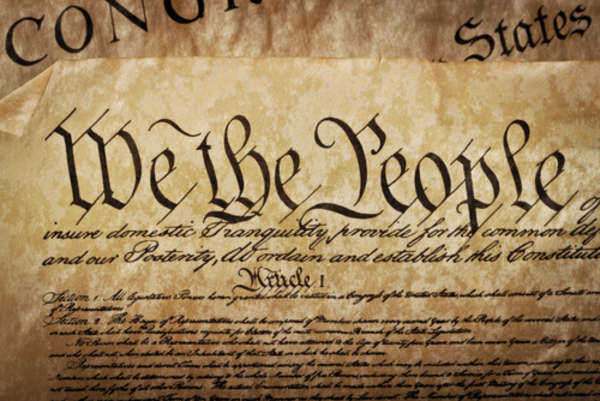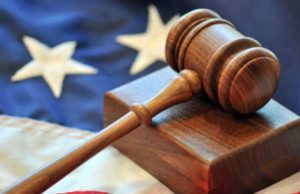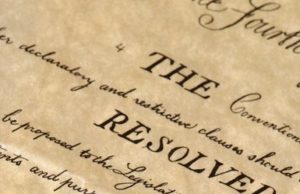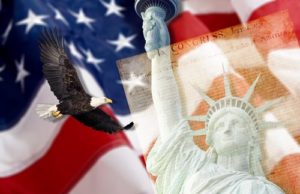Table of Contents

Article 2 of the Constitution: Keeping the Executive Branch in Check
If Article 1 of the Constitution outlines the powers and functions of Congress, Article 2 details the framework for the country’s executive branch, which comprises the President, Vice President, and Cabinet. Article 2 outlines the selection and role of the President, clarifies their powers and duties, and defines the powers of the Vice President and Cabinet. In this article, we’ll explore Article 2’s content and its role in keeping the executive branch’s power in check.
The Selection and Role of the President
Article 2 sets out the criteria for selecting the President, who must be a natural-born citizen with a minimum age of 35 and a resident of the United States for 14 years. The President is elected through the electoral college system, with each state receiving a certain number of votes based on their population.
The President’s role is to execute and enforce federal laws, administer the country’s foreign policy, and act as the Commander-in-Chief of the military. In addition, the President has the power to veto legislation passed by Congress and to nominate federal judges, ambassadors, and other officials.
Clarifying Presidential Powers and Duties
Article 2 also clarifies the President’s role as the head of the executive branch. The President has the power to execute the country’s laws and act as its guardian. Besides, the President has the power to oversee the country’s foreign policy, including treaties and powers of appointment. However, the President’s power is not absolute, and the Constitution outlines checks and balances to avoid tyranny.
The Powers of the Vice President and Cabinet
Article 2 also defines the role of the Vice President, who serves as the President of the Senate, casting a vote in the event of a tie. The Vice President is also designated as the successor to the Presidency in the event of the President’s death, removal from office, or resignation.
The President’s Cabinet comprises advisors who serve at the President’s pleasure and are responsible for advising and implementing the President’s policies. Each Cabinet member is nominated by the President and approved by the Senate.
Keeping the Power in Check
One of the significant themes that run through Article 2 is the need to prevent the executive branch from accumulating too much power. Checks and balances are placed on Presidential power to prevent their abuse of power. Congress has the power to impeach the President, the Senate has the power to ratify treaties, and the judiciary has the power to declare Presidential actions unconstitutional.
Conclusion
Article 2 of the US Constitution is an essential piece of legislation that creates the framework for America’s executive branch. The article outlines the selection and role of the President, defines their powers and duties, and clarifies the role of the Vice President and Cabinet. However, most importantly, Article 2 puts in the necessary checks, balances, and safeguards to prevent the President from becoming too powerful, thereby ensuring that the Constitution’s values and principles remain protected, now and always.The Second Article of the Constitution sets out the definition and terms of the Executive Branch of Government for the United States of America. The executive branch of any governmental structure is the one most likely to become powerful, thanks to the nature of executive power.
In most countries, when a dictatorship or despotic form of government forms, the despot comes from what was once the executive branch of the government. Indeed, in the British system of the time, a great deal of power was invested in the monarch of Britain, thus empowering the executive branch of that government. The Second Article of the Constitution, then, was an attempt to help define executive powers without letting them overrun the Government.
It was aimed at both establishing the nature and election procedures for the executive branch, while also ensuring that there were some limits to the powers of that executive branch. Article 2 has been expanded and adapted by some Amendments over the years. The Twenty-Fifth Amendment, for example, specifically clarified Clause 6 in Section 1 of the Second Article of the Constitution, because of its ill-defined wording.
While Clause 6 would have provided for the Vice President to at least assume the duties of the President if the President were unable to perform them himself, it still remained vague on any number of matters, including whether or not the Vice President would become an Acting President or a full President. The Twenty-Second Amendment was also an adaptation of the Second Article, under which the President could not be elected to the office more than twice. The Twelfth Amendment significantly altered the way in which the electoral procedure for the executive branch actually functioned, thereby superseding that part of the Second Article of the Constitution. These changes to the Second Article have helped to further define and refine the points and purposes of that Second Article, such that no difficulties will arise from the Second Article’s original faulty wording or function.
This is especially important as the Second Article, for all that it is part of an intricate system, the whole of which is important to protect and preserve, deals with the branch of government which, as has been shown through countless historical examples, is the most likely to lead to abuses of power. Ensuring that the Second Article of the Constitution is refined, then, is critical for the stability of the overall country. For example, if the Twenty-Fifth Amendment had never been implemented, then there would not be a clearly defined system for establishing a new Vice President after a Vice Presidential vacancy, and there would be no clearly defined system for a President to either establish himself as unable to fulfill his duties for the time being or for other officers in Government to be able to establish that the President is unable to fulfill his duties for the time being.
The only option would be impeachment, which would not necessarily function in certain situations. While no President has ever been removed from power by the declaration of other officers, the fact remains that without such an Amendment, the Second Article of the Constitution would have had a hole in it that could have caused potential problems at a later point in time. Because the Second Article of the Constitution concerns the Executive Branch, however, it is most critical for that Article to be able to clearly delineate the powers of the Executive Branch in order to prevent abuses of power.

























